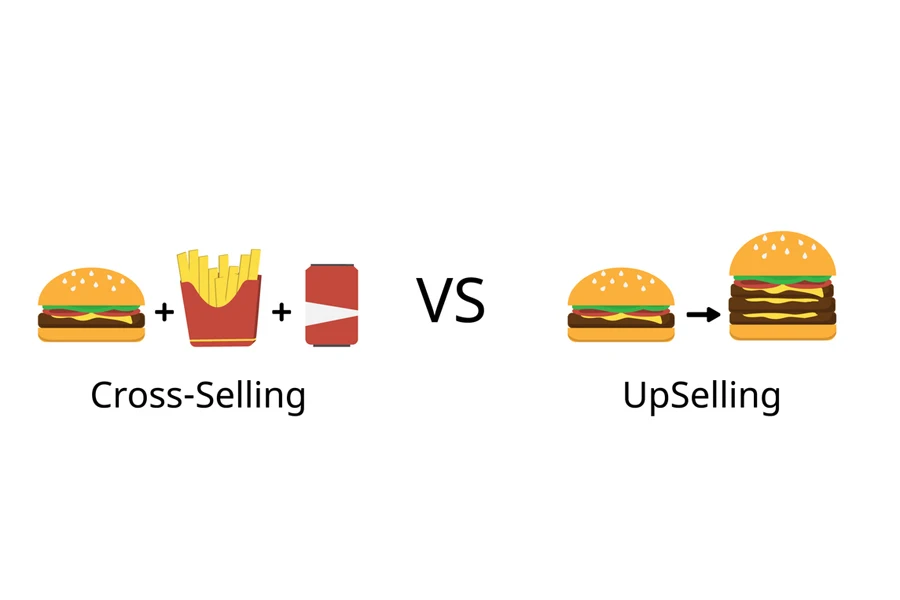In today’s ever-changing business landscape, excelling in cross-selling techniques is crucial for business owners, as it boosts sales revenue and leaves your customers happy. According to experts, cross-selling can potentially increase e-commerce profits by 77%. Therefore, employing this strategic approach can significantly improve your company’s bottom line and foster a strong relationship with your customers.
What is cross-selling, and how can you apply its key principles in your business? In this article, we will look at the meaning, explore the benefits, and provide five practical strategies to help you start implementing successful cross-selling campaigns. Read on to learn more.
Table of Contents
What is cross-selling?
Benefits of cross-selling
5 cross-selling strategies to boost sales revenue & customer satisfaction
Conclusion
What is cross-selling?
Cross-selling is a sales technique where a business encourages customers at the point of sale to buy additional items or services related to their initial purchase. This goes beyond merely promoting the main product and involves suggesting complementary or related products that add value to the customer. A classic example of cross-selling is when a fast-food restaurant includes fries and a drink when a customer orders a burger.

Cross-selling is not limited to traditional brick-and-mortar stores but equally applies to online retailers. In an e-commerce setting, cross-selling can manifest as product recommendations on a product page or additional items suggested during checkout. For instance, you may have encountered Amazon’s “Frequently bought together“ feature, which has helped increase the company’s customer engagement and sales by up to 35%.
Benefits of cross-selling
There are several benefits that employing a cross-selling strategy brings to your e-commerce store. They include the following:
1. Additional revenue streams

Since cross-selling is all about offering additional products or services that complement your customer’s initial purchase, this seemingly simple act holds the key to diversifying your revenue streams. By strategically introducing related offerings, you tap into your new and existing customer base, thus increasing your overall sales figures.
A study revealed that companies successful with cross-selling campaigns generate 16% of their yearly sales revenue. Therefore, you not only safeguard your financial stability but also isolate your business from market fluctuations and economic uncertainties.
2. Enhances customer value

The essence of cross-selling lies in understanding and meeting your customer’s needs. When you present them with relevant add-ons or upgrades, you demonstrate a commitment to enhancing their overall experience.
Offering your clients incentives like free shipping, promo codes, or BOGO deals is one of the easiest ways to improve customer value. According to experts, 86% of buyers are willing to pay more if they get an excellent customer experience — something you gain from cross-selling.
3. Strengthens customer relationships
Successful businesses understand the importance of building solid and lasting relationships with their customers, and cross-selling provides a natural avenue to deepen these connections. By offering solutions and additional services that address their needs or concerns, you showcase a comprehensive understanding of your customers’ requirements.
This, in turn, establishes trust, positioning your brand as a reliable partner in their journey. In addition, when your brand is trustworthy, you have a 68% chance of customers buying from you and defending your business.
4. Increases average order value (AOV)

One effective way to increase average order value is by cross-selling. Your business can raise each transaction’s total value by urging customers to add complimentary goods to their carts.
A Zipdo report revealed that cross-selling efforts can increase average order value by 20%. Therefore, in the event that a consumer purchases a camera, for example, recommending extras like a memory card, tripod, or camera bag might raise the AOV considerably.
5. Provides an all-inclusive shopping experience
When people come to your store, a good idea is to provide them with lots of choices in each of your product categories. Among the best practices is not just listing the basics but showing off some of the options that customers are yet to see, which opens their eyes to everything you offer. This shows them you have a ton of variety for any of their needs.
Therefore, making recommendations means shoppers can find everything they want in one place without the need to go searching elsewhere. It becomes convenient when casual browsing turns into one-stop shopping. In the end, it’s a win-win for you and your customers.
5 cross-selling strategies to boost sales revenue & customer satisfaction
While cross-selling significantly benefits online stores looking to increase their sales and upgrade their customer experience, understanding the best ways to implement this tactic is key. Here are five strategies to supercharge your business with cross-selling:
1. Know your customers

The essence of successful cross-selling is rooted in a deep understanding of your customer base. As a business proprietor, dedicating time and resources to accumulate and evaluate customer data can unravel priceless insights into their inclinations, purchasing patterns, and what they need.
The easiest way to understand your clients is by utilizing customer relationship management tools. These powerful tools are essential as they can cleverly track and structure loads of information for maximum impact. As you understand your customers with the data analyzed by CRM systems, it becomes easy for your sales team to uncover organic product or service combinations that will likely appeal to them.
Consider an online electronics store where a customer regularly buys cameras. It presents a natural opportunity to suggest related items like camera bags, tripods, or additional lenses, delivering a seamless and relevant cross-selling proposition. Efficiently identifying and presenting these complementary options can enhance the customer experience and eventually drive incremental sales.
2. Leverage personalized recommendations

Once armed with a wealth of customer data, the next step is to leverage personalized recommendations. Implementing AI-driven recommendation engines on your website or employing targeted email campaigns is a great way to help with your cross-selling process. These engines analyze customer behavior, purchase history, and preferences to suggest relevant products or services.
Take the case study of a successful e-commerce giant like Amazon, whose recommendation algorithms have become synonymous with their business model. In addition to raising the possibility of a successful cross-sell, offering tailored recommendations improves the overall experience and encourages repeat business and customer loyalty.
3. Bundle products strategically

Creating product bundles is another effective cross-selling strategy you can use to grow your sales output. Bundling involves grouping related items and offering them at a discounted price compared to purchasing each item individually. This strategy works by encouraging customers to buy complementary products simultaneously, boosting overall sales, and providing a sense of value.
For instance, if you operate a fitness equipment store, your sales reps can create a bundle featuring a set of dumbbells, a yoga mat, and resistance bands at a discounted price. Providing such offers will entice customers to make a larger purchase while at the same time introducing them to additional products that enhance their workout routine.
4. Timing is key

How you time your cross-selling matters, and the right time can significantly impact your sales efforts. Instead of bombarding customers with additional offers at random intervals, you can strategically time your cross-selling suggestions based on the customer journey.
If a customer has just completed a purchase, you could present them with a complementary product suggestion on the order confirmation page or through a follow-up email.
Similarly, during the browsing phase, providing subtle recommendations based on the items in their shopping cart can guide customers toward complementary products they may have overlooked. This can increase their likelihood of embracing the additional offerings by matching your cross-selling effort with the customer’s buying path.
5. Educate and add value

One frequently overlooked strategy in cross-selling involves educating customers about the benefits of complementary products. Instead of solely concentrating on the sale, demonstrate how the additional item amplifies the original product purchase to provide added value and convenience.
For instance, picture operating a fitness equipment store where a customer purchases a high-quality elliptical machine. Cross-selling could entail showcasing training modules specifically designed for optimizing workouts, framing them as valuable additions to maximize the user’s fitness journey. Emphasizing these value-added benefits boosts the chances of a successful cross-sale while creating a positive perception of your business.
Conclusion
Mastering the art of cross-selling involves a nuanced understanding of customer behavior and strategic implementation. By incorporating the above techniques, you can increase your e-commerce sales revenue and create a positive and personalized experience for your buyers.
As the business landscape evolves, businesses that master these strategies will be better positioned to thrive in the competitive marketplace. Do you want to source suitable products to upsell and cross-sell to your customers? Start stocking your inventory with items from Alibaba.com.




